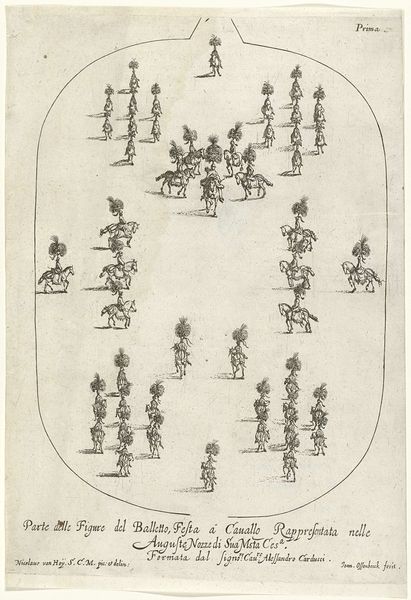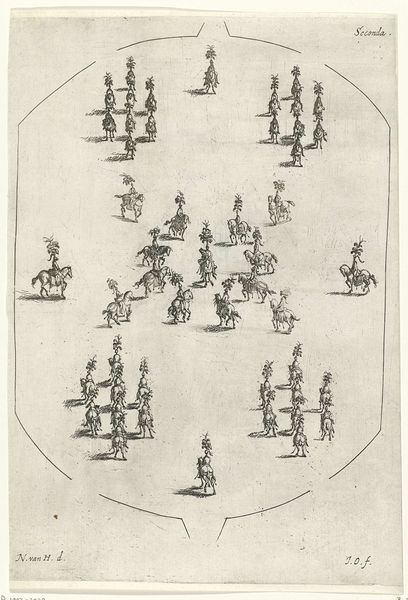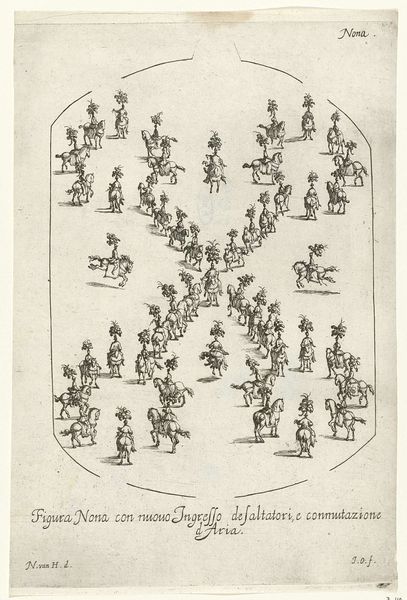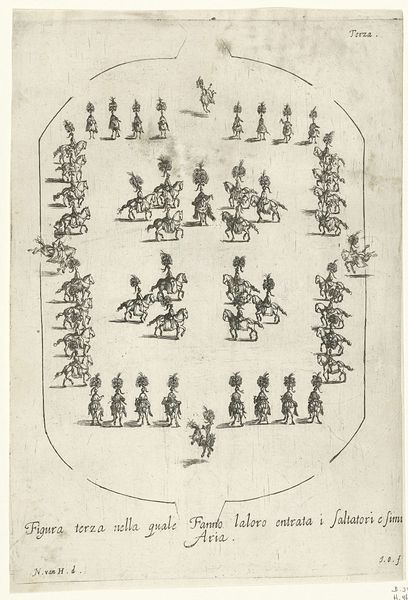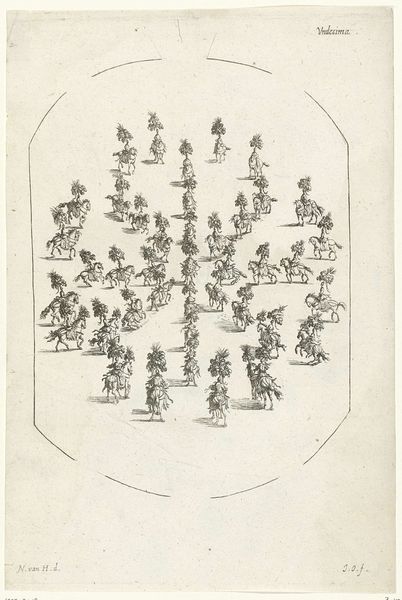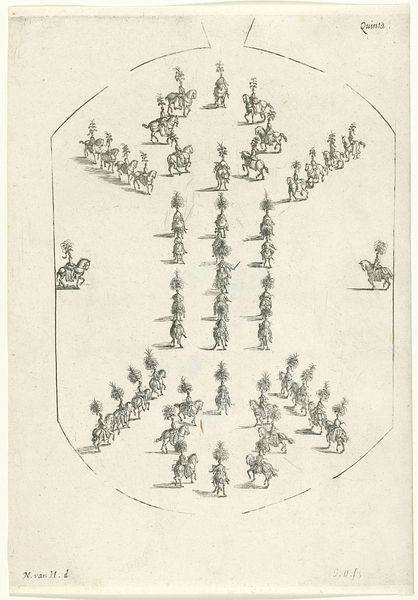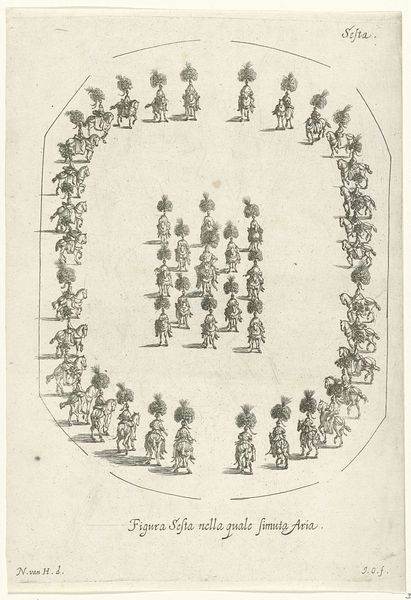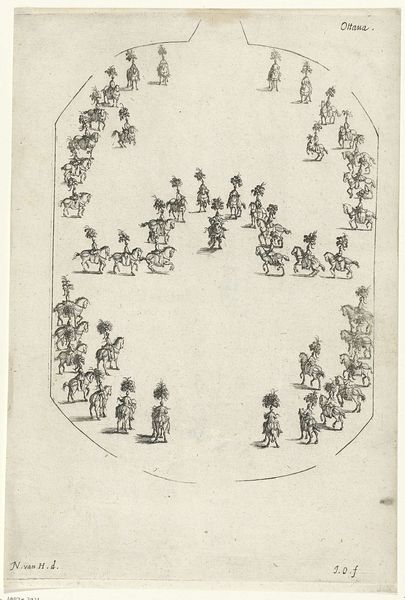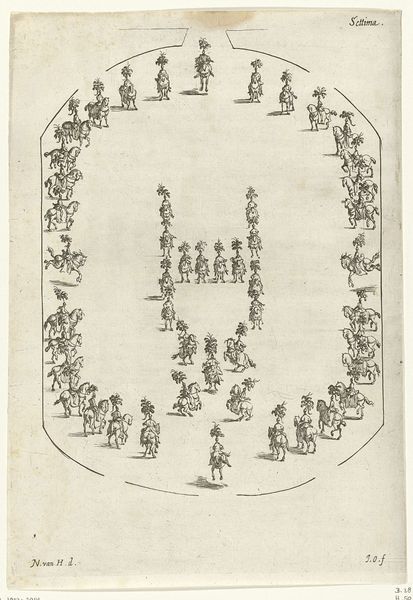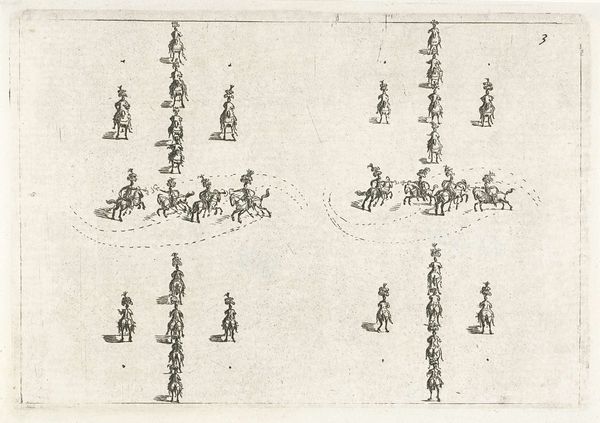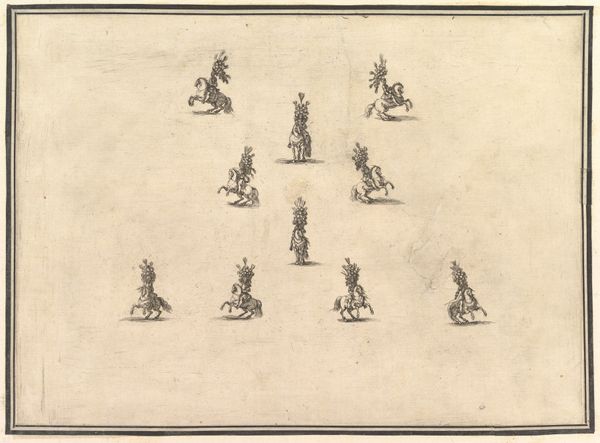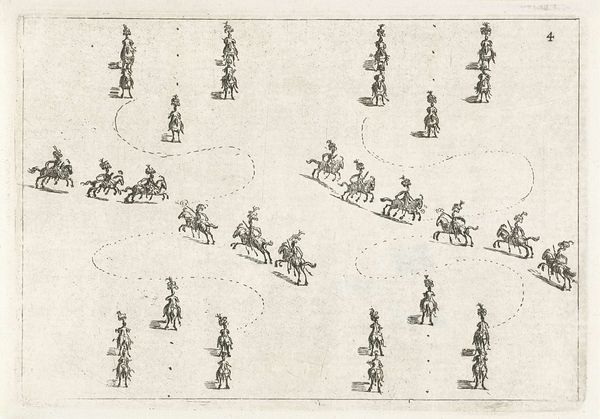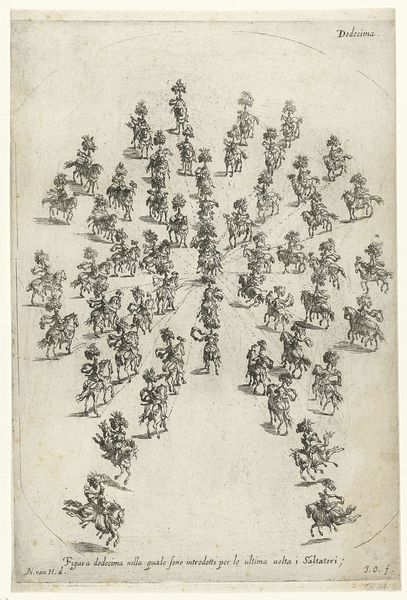
drawing, ink, engraving
#
drawing
#
baroque
#
pen sketch
#
ink
#
history-painting
#
engraving
Dimensions: height 285 mm, width 192 mm
Copyright: Rijks Museum: Open Domain
Curator: The energy in this pen and ink sketch just leaps off the page. It’s like a choreography of conflict, a precisely mapped performance of power. Editor: It’s dizzying! I immediately notice the material economy—the controlled application of ink to create a sense of depth with such simple means. How were these marks reproduced and circulated in 1667, when Jan van Ossenbeeck rendered "Ruiterformaties (Quarta)"? Curator: Exactly! Consider the historical moment. These “horse formations,” meticulously arranged, aren’t just aesthetic exercises. They mirror the brutal, calculated strategies of warfare that shaped 17th-century Europe. They point to the embodied experience of battle through formations, signaling military and social orders. Editor: And what kind of social function was served through reproducing and distributing such a controlled visual representation? Curator: That's critical. This wasn’t just documentation, but visual propaganda—encoding notions of discipline and masculine virtue amidst nearly constant conflict. We should ask: what other political ideologies intersect here in the representation of the riding groups or in the engraving’s display? How would it be experienced by different genders and social classes at the time? Editor: There’s a deliberate artifice that reminds me how deeply entwined art, war, and politics always are. But I’m also intrigued by the mechanics of its production. What labor went into preparing the plate, making the ink, distributing it to different audiences? Curator: Acknowledging labor helps us recognize that “history painting” isn’t an exclusive term; there were many actors and participants in that construction. Editor: Well, looking at "Ruiterformaties" with fresh eyes brings historical, cultural, and artistic contexts into sharper focus, underlining the intertwined nature of warfare, art production, and consumption. Curator: It reinforces the important point that images like this did more than record battles, they performed ideology for its period while shaping memories and cultural identities for its beholders then, and for us now.
Comments
No comments
Be the first to comment and join the conversation on the ultimate creative platform.
